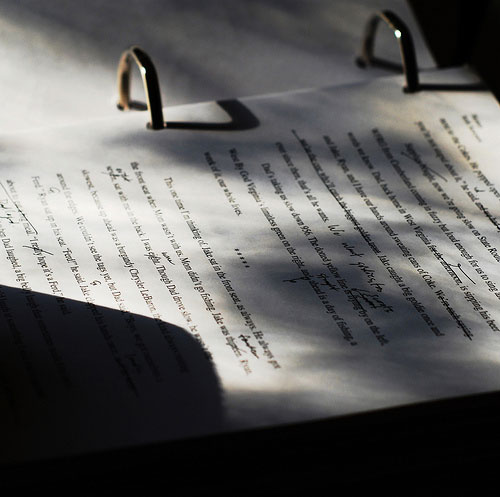It seems like everyone and their uncle has an opinion on what constitutes a good pitch these days; just a brief online perusal will provide you with a colorful variety of perspectives on the subject. What a general web search may not tell you, however, is that there is a second pitch process in the lifespan of a manuscript. Many authors may not realize how much work goes into preparing this second pitch before the manuscript (or in-house project) being considered is officially acquired.
But what does it take to fully prepare a manuscript pitch for presentation at Ooligan Press? What does this mysterious second pitch consist of, and how is it similar to (or different from) the traditional author-to-editor pitch? In truth, every pitch is unique. There are distinct differences in how a fiction pitch is approached versus a nonfiction pitch, and there are distinct challenges associated with producing pitch material for an undeveloped in-house project versus a traditionally acquired manuscript. However, most pitches will include some variation of the following:
- General Information. This section introduces the bricks and mortar of the manuscript. Title, publication date, page count, genre, trim size, and price can all be found in this section. At the time of the pitch, some of this information may be speculative.
- Manuscript Information. It is common to utilize this section to introduce the manuscript’s content. The mission, hook, summary, and background information can all be found here. This strengths and weaknesses of the manuscript are addressed here, as well as possible ways in which challenges to the manuscript can be overcome. Finally, this section includes the all-important BISAC categories that help classify the genre, competition, readership, and sales focus of the manuscript.
- Benefit to Student Publishers. Perhaps unique to Ooligan Press, this section establishes how the manuscript in question will help Ooligan students become better publishers and answers the following questions: Does this manuscript have unique marketing opportunities? Is it different from previously published works? Are there distinct editorial or design challenges? Essentially, it outlines the potential learning opportunities associated with the project.
- Marketing & Promotion. Authors and publishers alike have a love-hate relationship with marketing. Manuscripts, regardless of genre, are often passion projects and intimate reflections of their creators. However, this is an essential section, covering such important topics as audience, promotional opportunities (across all media platforms), possible awards and grants, industry connections, and the budget—known as a Profit & Loss Statement, or P&L. This section breaks down what the audience is and what measures are necessary to make the manuscript as inviting and accessible to that audience as possible.
- Comparative Titles. Comparative titles are books that are similar in theme, style, length, genre, publishing era, and sales potential. Other than the marketing copy, this can be one of the most challenging sections of the pitch to complete. By establishing the comparative titles, you are establishing the manuscript’s competition and honing in on a highly specific focus. Comparative titles provide valuable insight into the potential success of the manuscript and help sales reps and distributors reach the right audiences.
It’s worth noting that the second pitch is based largely on the first. That is, what material the author provides in their pitch to the acquiring editor is used as a platform and then combined with the acquiring team’s industry knowledge and press-specific experience. The more thorough and in-depth the author’s pitch is, the better the title will be represented in the second pitch. At Ooligan Press, we take great care to preserve and represent the author’s creative vision throughout the second pitch process.

